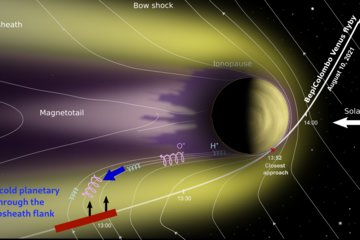All genres
1.
Journal Article
2D and 3D Polar Plume Analysis from the Three Vantage Positions of STEREO/EUVI A, B, and SOHO/EIT. Solar Physics 283, pp. 207 - 225 (2013)
2.
Journal Article
Particle kinetic analysis of a polar jet from SECCHI COR data. Astronomy and Astrophysics 538, A34 (2012)
3.
Journal Article
STEREO/SECCHI Observations on 8 December 2007: Evidence Against the Wave Hypothesis of the EIT Wave Origin. Solar Physics 259 (1-2), pp. 73 - 85 (2009)
4.
Thesis - PhD
Stereoscopy and tomography of coronal structures. Dissertation, Techn. Univ. Carolo-Wilhelmina, Braunschweig (2011)











